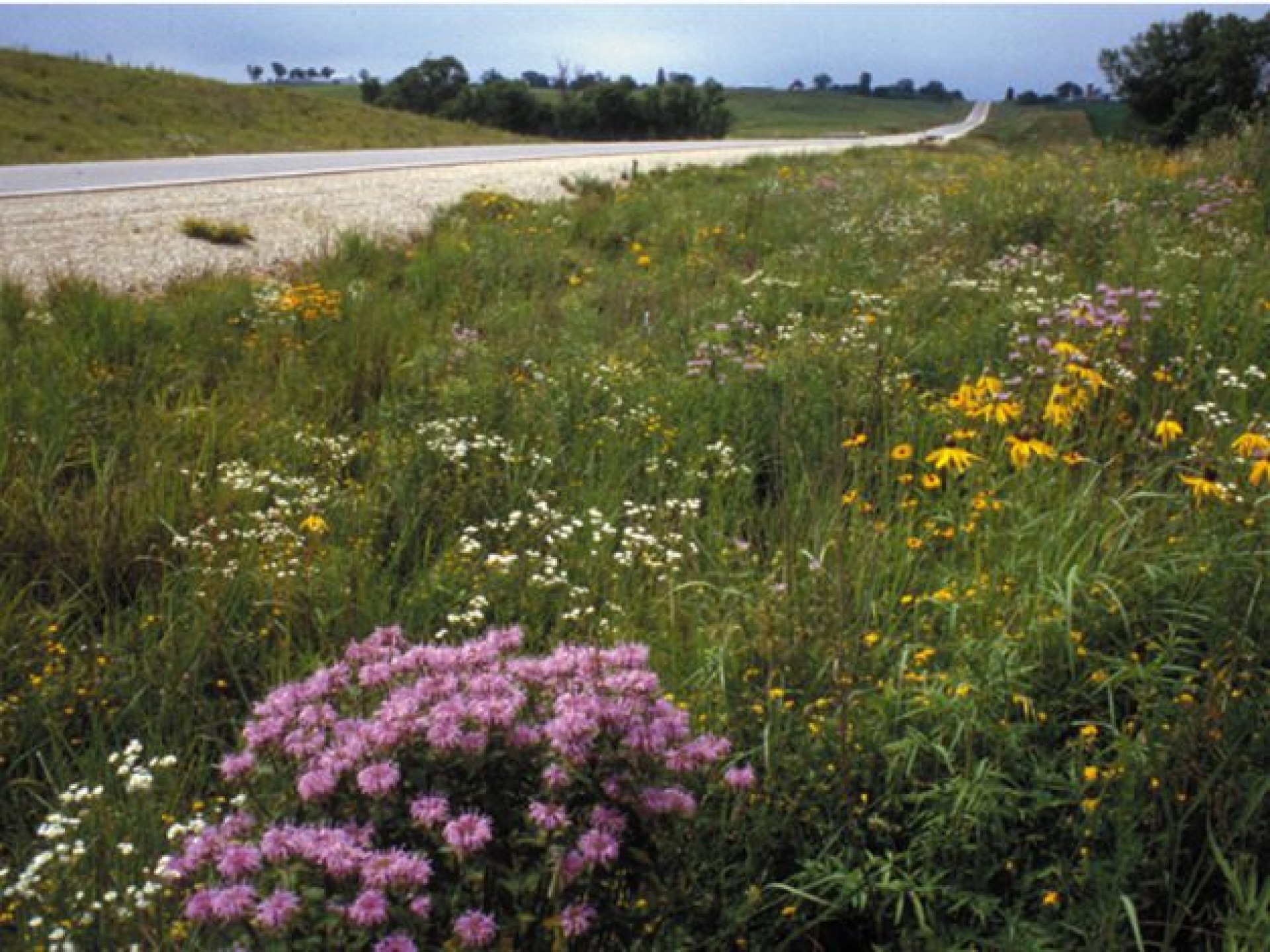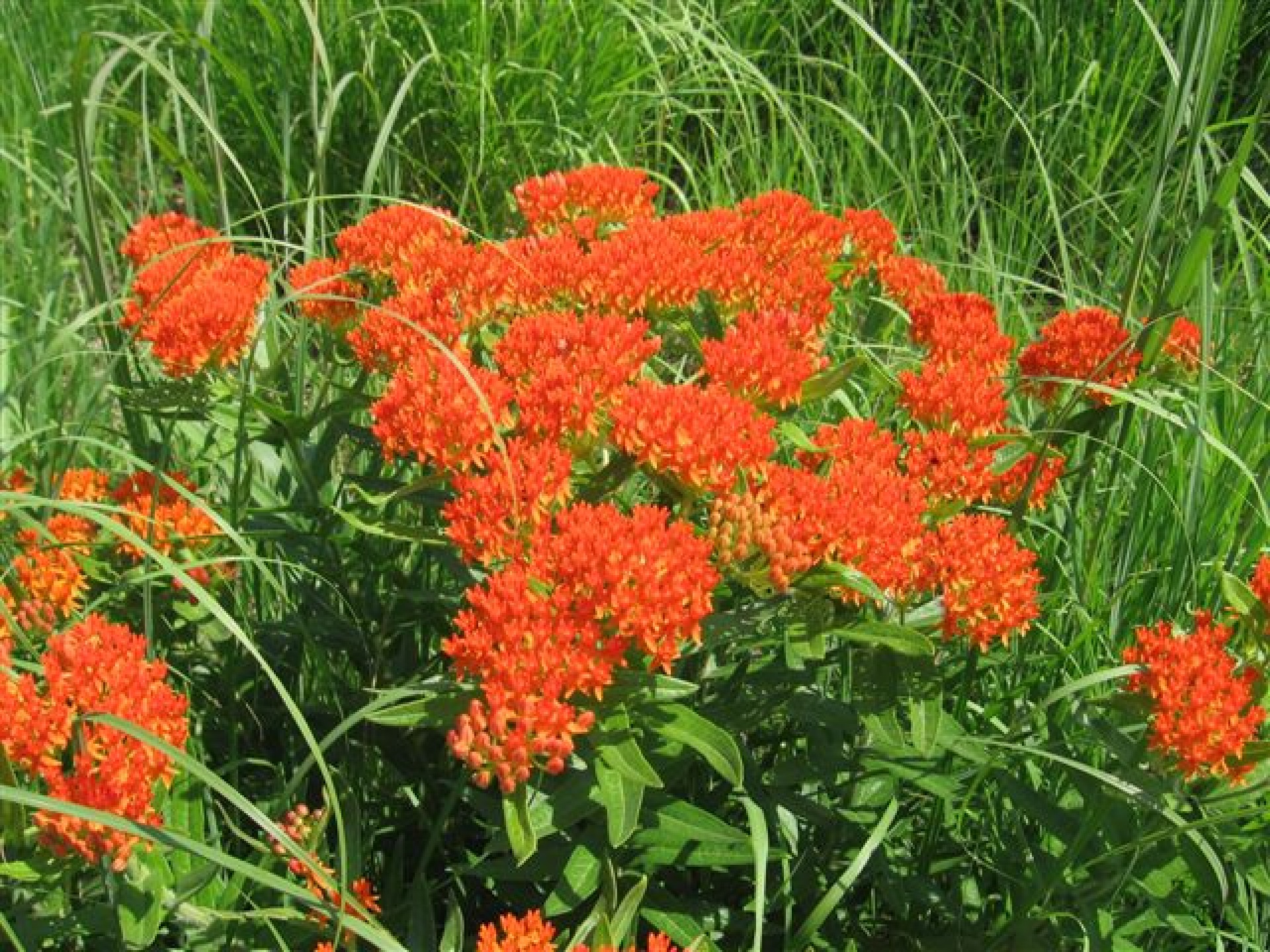Roadside Management
 To meet these objectives the county's IRVM program plants attractive and well-adapted native vegetation in roadsides. Native vegetation is very competitive and, once established, will out compete unwanted noxious weeds. Ultimately, native vegetation planted in the roadsides reduces the need for pesticides, reduces mowing, can reduce flooding, and also provides habitat for various species of wildlife, including pollinators.
To meet these objectives the county's IRVM program plants attractive and well-adapted native vegetation in roadsides. Native vegetation is very competitive and, once established, will out compete unwanted noxious weeds. Ultimately, native vegetation planted in the roadsides reduces the need for pesticides, reduces mowing, can reduce flooding, and also provides habitat for various species of wildlife, including pollinators.
The IRVM program also utilizes herbicides applied using a technique known as spot spraying, that only targets the noxious weeds. Prescribed fire is another tool that is used to promote and maintain native vegetation and reduce the encroachment of woody plant species in the roadside. Prescribed fire is used only under controlled situations and under strict guidelines.
 If you do not want spraying conducted along the roadsides adjacent to your land, you can request that those roadsides not be sprayed. To insure that those areas are not sprayed, we require landowners each year to fill out a No Spray Agreement, as well as a section map of the area of concern. Please send these back to the WCCB at 41600 Highway 69, Leland, IA, 50453.
If you do not want spraying conducted along the roadsides adjacent to your land, you can request that those roadsides not be sprayed. To insure that those areas are not sprayed, we require landowners each year to fill out a No Spray Agreement, as well as a section map of the area of concern. Please send these back to the WCCB at 41600 Highway 69, Leland, IA, 50453.
If you'd like to learn more about the wildflowers you see in our road ditches, check out the Roadside guide.


